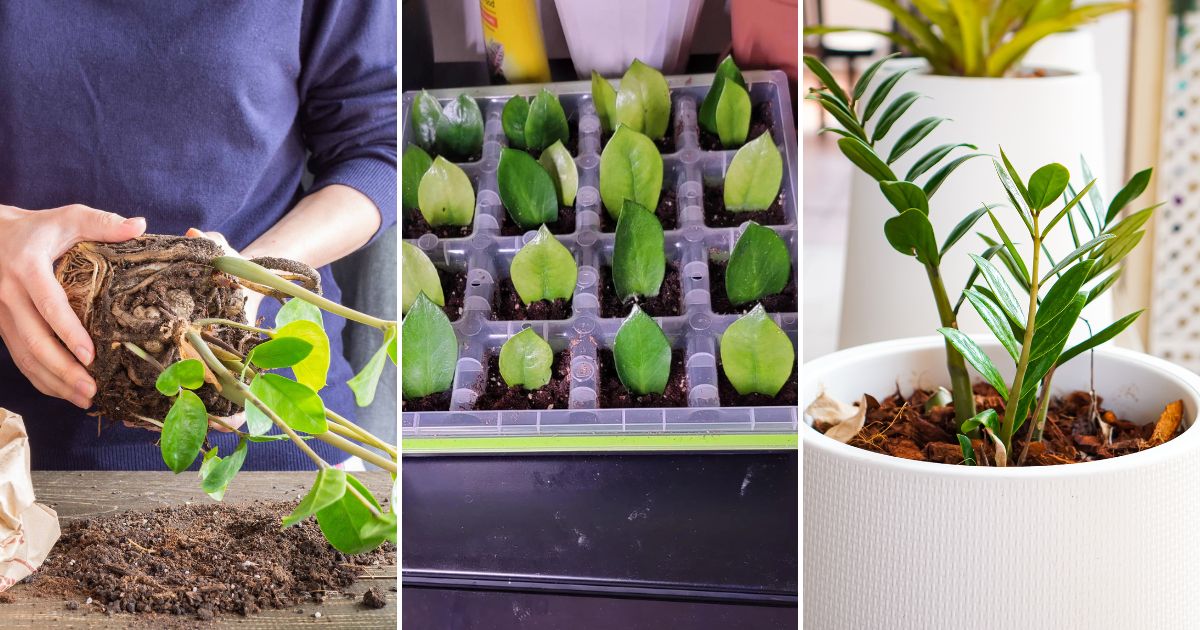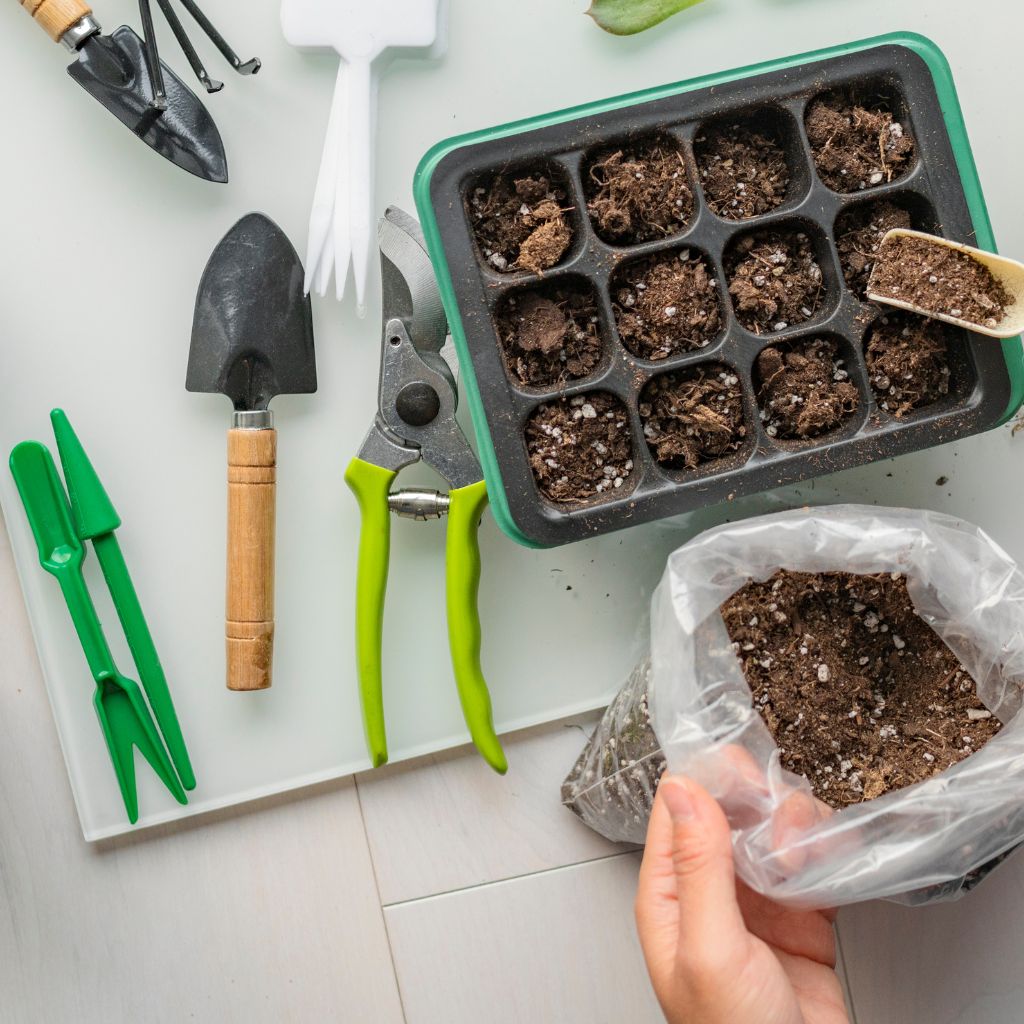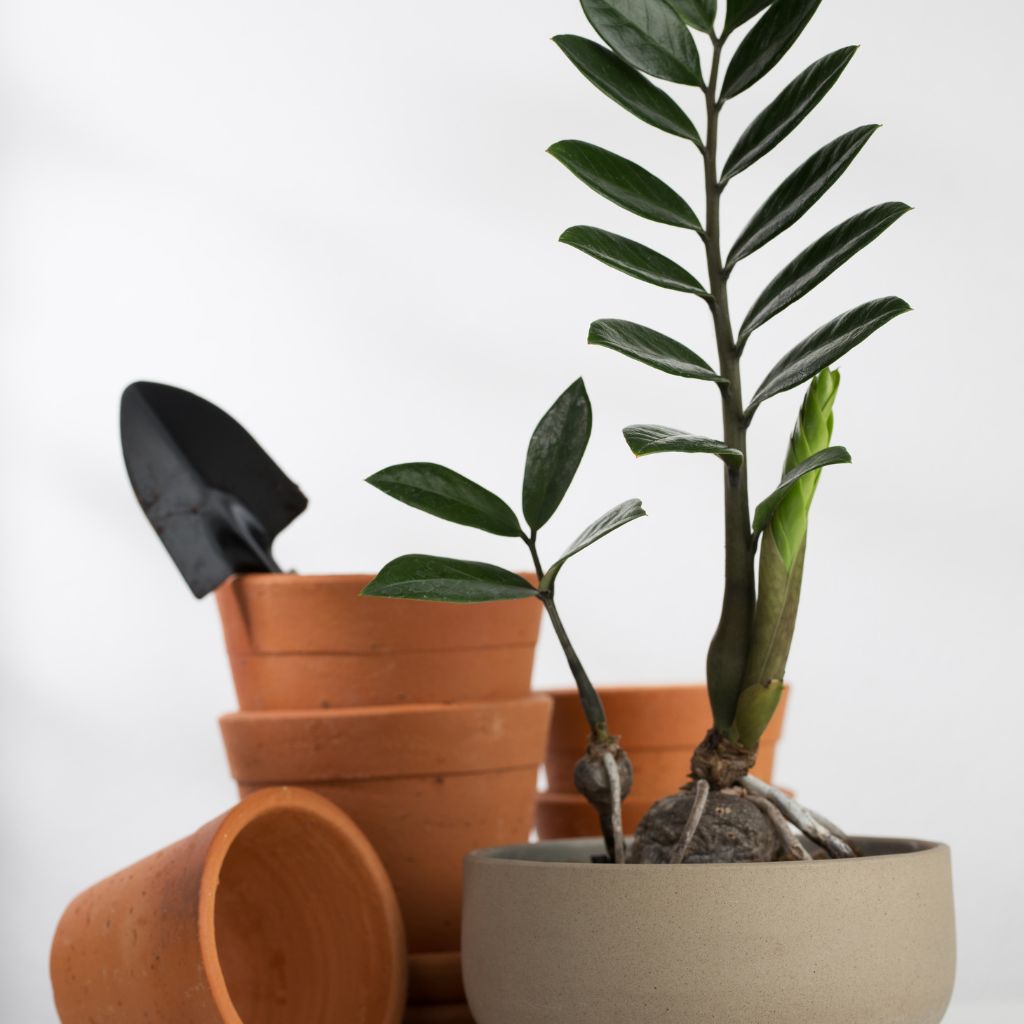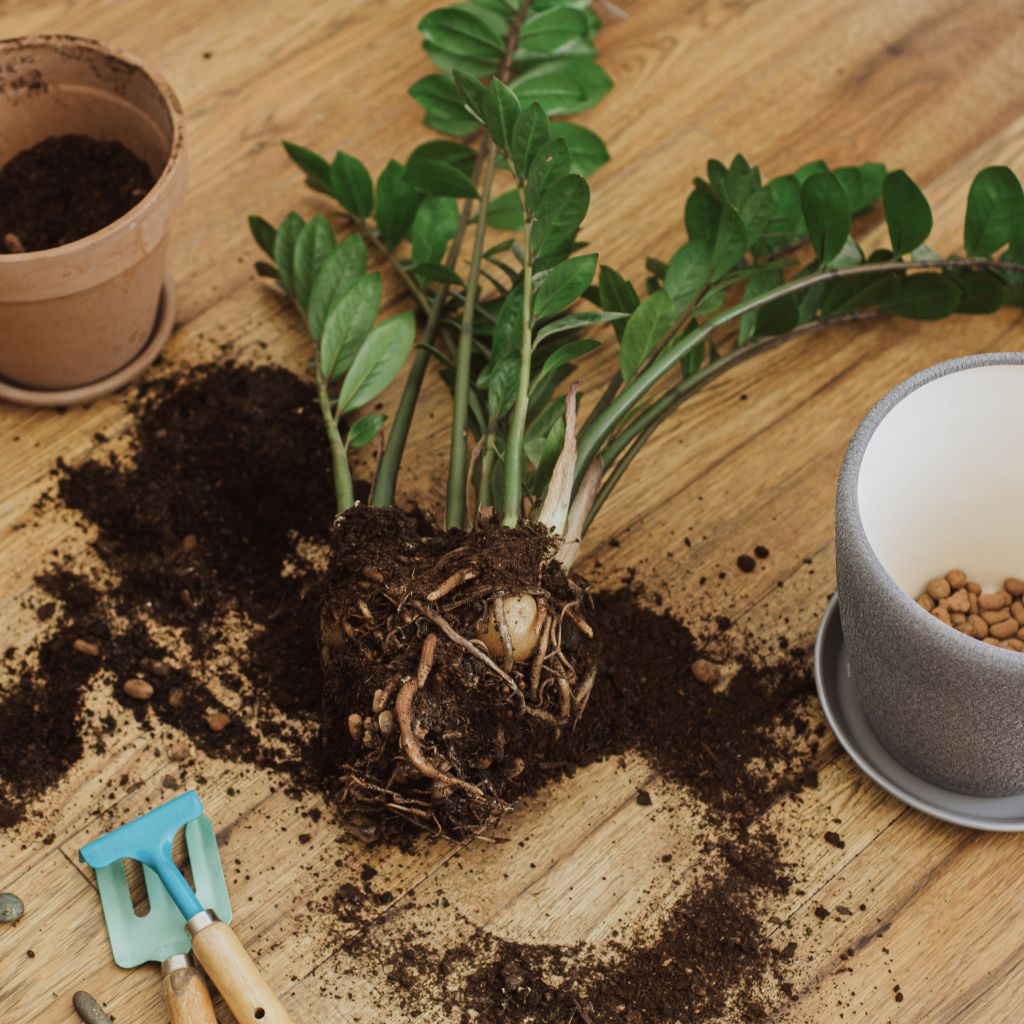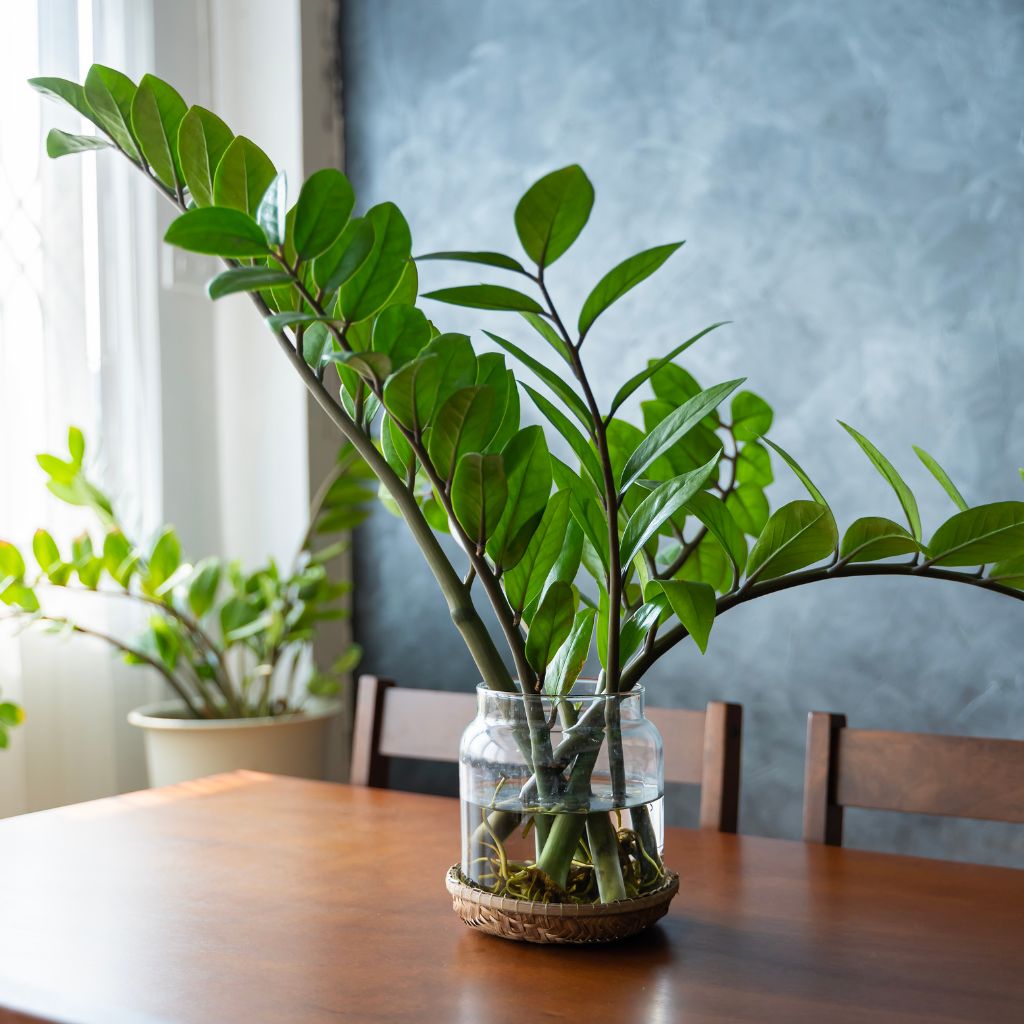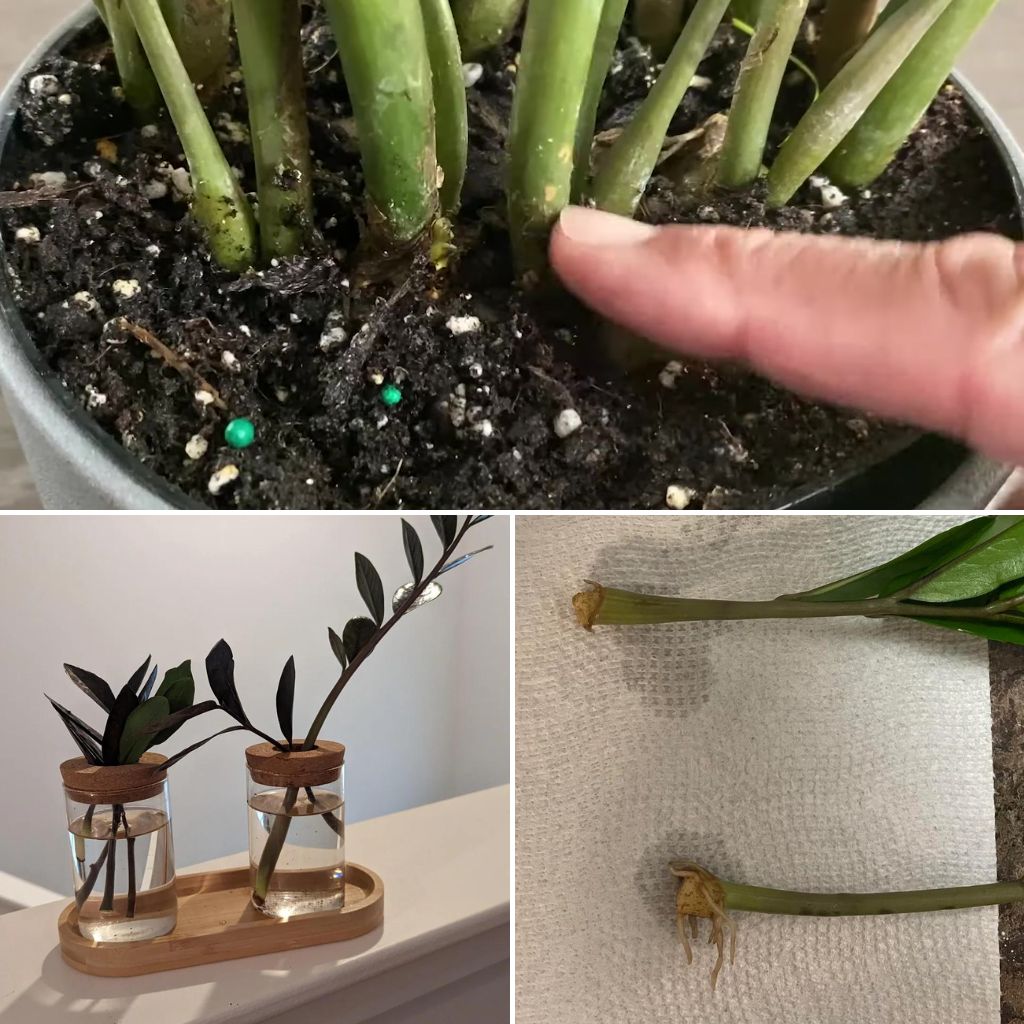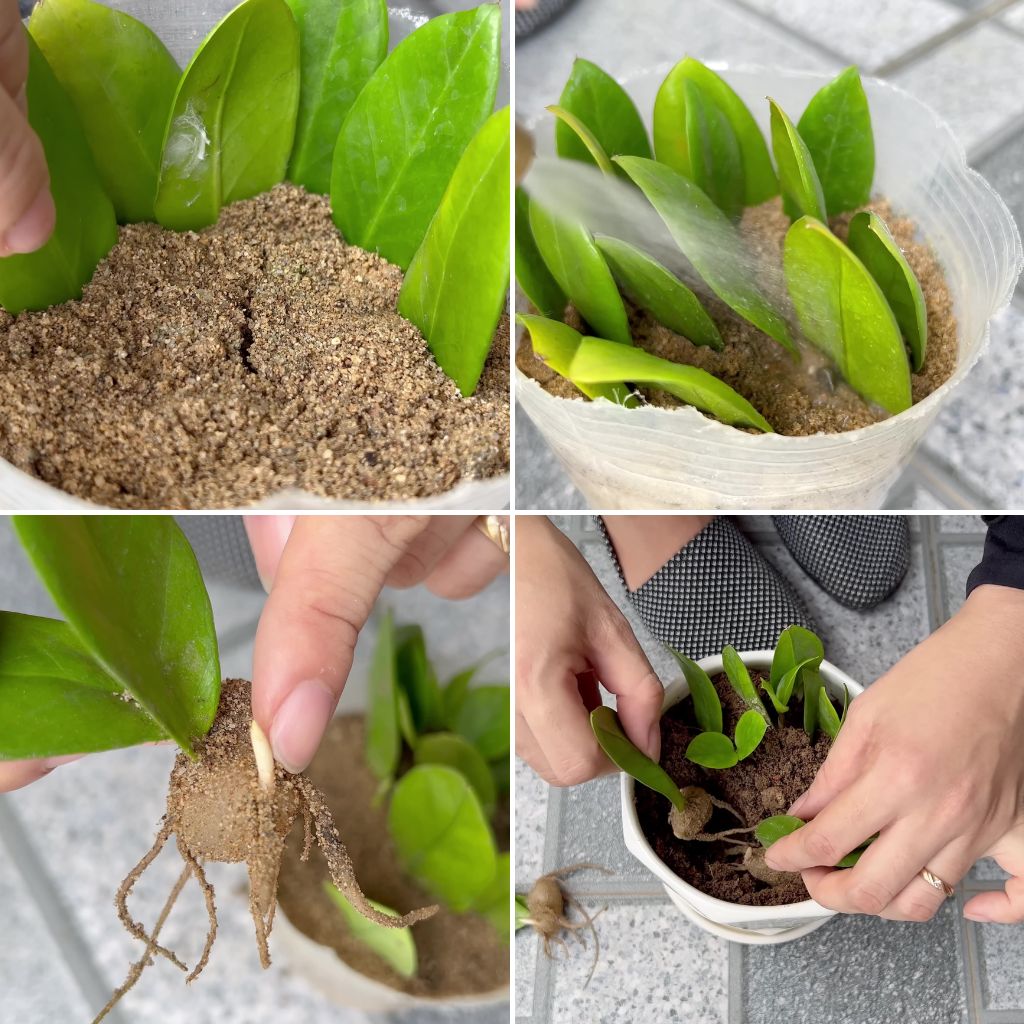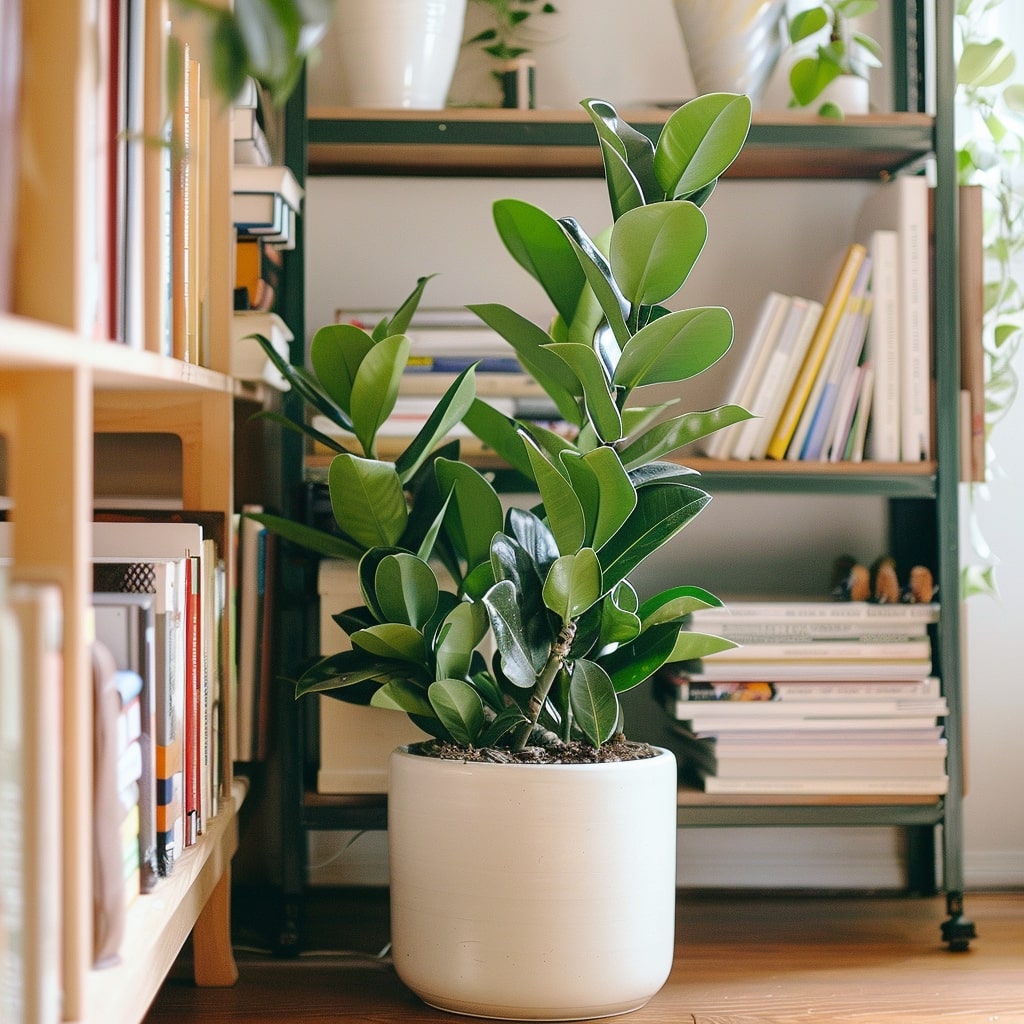ZZ plants, or Zamioculcas zamiifolia, are beloved houseplants known for their resilience and low maintenance needs. One of the joys of owning a ZZ plant is the ability to propagate it, allowing you to expand your plant collection or share the beauty with friends and family.
In this guide, we’ll explore the easiest way to propagate ZZ plants and two additional methods you might want to try.
When to Propagate ZZ Plants
While ZZ plants can be propagated at any time of the year, they tend to respond best during their active growing season, which occurs in the spring and summer. This timing ensures that the plant has the energy to develop new roots and foliage.
What You’ll Need
Equipment/Tools:
- Pruning shears or scissors
- Glass container
- Shallow pot or tray
Materials:
- Well-draining indoor potting soil
- Plastic or terracotta pot
1. The Easiest Way: Propagating by Division
Propagating ZZ plants by division is the simplest and most straightforward method. This approach involves separating a mature plant into several smaller sections, each with its own stems and roots. Here’s how to do it:
Step-by-Step Guide:
1. Prepare the Plant: Water your ZZ plant a few days before you plan to divide it. This helps to ensure the plant is hydrated and makes the division process smoother.
2. Remove the Plant from Its Pot: Carefully remove the ZZ plant from its pot. You can do this by laying the pot on its side and gently sliding the plant out.
3. Divide the Rhizomes: Using your hands or a sterilized knife, separate the plant into sections. Each section should have at least one stem and a portion of the root system. Be gentle to avoid breaking too many roots.
4. Repot the Divisions: Place each division in a new pot filled with well-draining soil. Ensure that each pot has drainage holes to prevent waterlogging.
5. Water and Place: Water the newly potted plants thoroughly and place them in a location with bright, indirect light. Continue to care for them as you would a mature ZZ plant, allowing the soil to dry out between waterings.
2. Propagating with Stem Cuttings
Stem cuttings are another effective method for propagating ZZ plants. This technique is great for plants of all sizes and provides reliable results.
Step-by-Step Guide:
1. Take Stem Cuttings: Use a pair of sharp, sterilized pruning shears to cut a stem from your ZZ plant. The cutting should be at least 2-4 inches long and include a few healthy leaves.
2. Allow to Callous: Let the cut ends of the stem callous over by placing them in a warm, dry area for a few hours to a few days. This reduces the risk of rot when the cuttings are placed in water or soil.
3. Choose Your Method: You can root the stem cuttings either in water or soil.
Rooting in Water:
1. Place Cuttings in Water: Fill a glass container with enough water to cover the bottom of the cuttings. Place the container in a location with bright, indirect light and change the water every few weeks to prevent bacterial growth.
2. Wait for Roots to Develop: Roots will begin to form within a few weeks, but it can take several months for them to grow long enough for repotting. Look for roots that are at least one inch long before moving the cuttings to soil.
Rooting in Soil:
1. Plant Cuttings in Soil: Fill a pot with well-draining potting soil and plant the cuttings, ensuring the cut ends are buried in the soil. Water thoroughly and place the pot in a location with bright, indirect light.
2. Care for the Cuttings: Keep the soil moist but not waterlogged. After a few months, new growth should appear, indicating that the cuttings have successfully rooted.
3. Propagating with Leaf Cuttings
Propagating ZZ plants with leaf cuttings is an option if you don’t want to sacrifice entire stems. This method is less reliable and slower, but it’s a fascinating process to watch.
Step-by-Step Guide:
1. Take Leaf Cuttings: Using sharp, sterilized scissors, cut several healthy leaves from your ZZ plant. Try to take leaves with a small portion of the stem attached.
2. Allow to Callous: Just like with stem cuttings, let the leaf cuttings callous over for a few hours to a few days.
Rooting in Water:
1. Place Leaves in Water: Place the leaves in a shallow container of water. Ensure the cut ends are submerged. A shot glass can work well for this purpose.
2. Wait for Roots: Change the water regularly and wait for roots and small rhizomes to develop. This can take several months.
Rooting in Soil:
1. Plant Leaves in Soil: Fill a shallow pot or tray with well-draining soil. Place the leaves with the cut ends in the soil and water lightly.
2. Care for the Cuttings: Keep the soil moist and place the pot in a warm location with bright, indirect light. Over time, the leaves will develop roots and eventually grow new shoots.
Common Issues and Tips
Overwatering:
Overwatering can lead to root rot, especially in newly propagated plants. Ensure the soil is well-draining and allow it to dry out between waterings.
Pests and Diseases:
Regularly inspect your plants for signs of pests or diseases. Treat any issues promptly to prevent them from spreading to other plants.
Temperature and Humidity:
ZZ plants thrive in average room temperatures and moderate humidity. Avoid placing them in areas with cold drafts or excessively dry environments.
Patience is Key:
Propagating ZZ plants can take time, especially when using leaf cuttings. Be patient and consistent with your care routine.
Light:
Provide bright, indirect light to encourage healthy growth. Too much direct sunlight can scorch the leaves, while too little light can slow down the propagation process.
Propagating ZZ plants is a rewarding way to expand your indoor garden. Whether you choose the straightforward method of division, the reliable approach of stem cuttings, or the slow but steady technique of leaf cuttings, each method offers its own set of benefits.
With patience and proper care, you can successfully propagate ZZ plants and enjoy the lush greenery they bring to your home.
